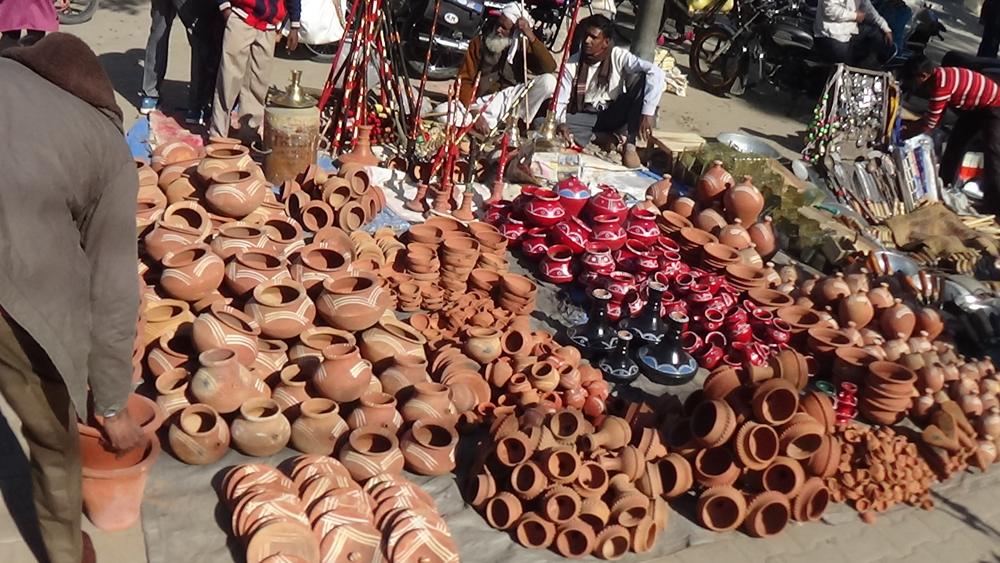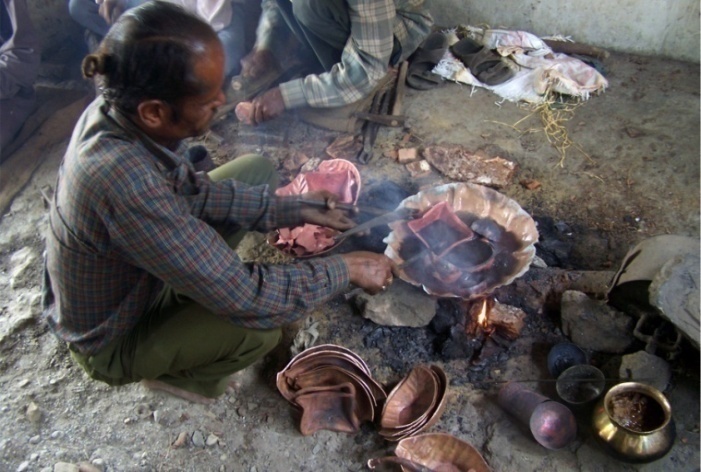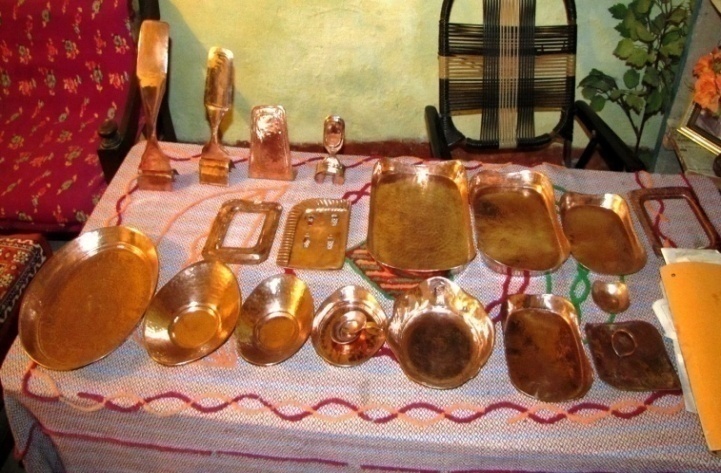In Roorkee so many small scale industries and factory are situated. 50% area of the salempur rajputaan village and shahpur sat-hapur village are covered by the factory and industries. Pipe, seller and electronic products are manufactured in the factories. There are two Industrial areas in Roorkee – one in Ram Nagar Industrial Area, the other being Devbhoomi Industrial Area on Roorkee-Panchkula NH-73, near Bhagwanpur.

Copper Ware Craft:
The origins of Tamta copperware craft can be traced back to 16th century AD, when the Chandravanshi clan of the Rajasthan region migrated to the Champawat region of the hill state that is today known as Uttarakhand. The traditional copper smiths of Rajasthan were brought along with the royal court to mint copper coins for the state treasury. A few of these Tamta crafts persons shifted to Almora and the Kharai Patti region in Bageshwar. Eventually, the Gorkhas overthrew the Chandravanshi rulers. In the year 1816, according to the treaty signed between the British and the Gorkhas, a ban was imposed on copper mining in the region. Gradually, the Tamta crafts persons started practicing this art to produce household articles. Due to the ban on copper mining, they started using copper scrap by melting and then recasting it into household articles. In due course of time, they migrated to other regions such as Almora and Pithoragarh in search of better facilities and better availability of raw material.
Copperware craft is found in three districts of Uttarakhand, namely, Almora, Bageshwar and Pithoragarh. The craftspeople engaged in making copperware in the hills of the Kumaun region are known as Tamtas. The Tamta Mohalla is a locality in the old city of Almora, which in earlier times belonged to the coppersmiths. Copper ware is one of the traditional crafts of Almora and some of the best coppersmiths still work from Tamta Mohalla. In Bageshwar, the Kharai Patti region was once famous for its copper mines until the British Raj banned mining. This region, which falls under the Dewaldhar block, comprises six 6 villages namely, Uderkhani, Chogaon Chinna, Kharak Tamta, Binsar, Gairsakida and Boregaon, all of which have many highly skilled Tamta crafts persons. Many national awardees also belong to this region. In Pithoragarh, the Tamtas work in Gangolihat and Berinag.


Handloom
Following three main Handloom Industries:
- Woolen handlooms
- Cotton handlooms
- Silk, natural fibers and combination
The dispersed and decentralized handloom and handicrafts sectors embody the traditional wisdom, cultural wealth and secular ethos of our polity. They are not just a source of livelihood for lakhs of weavers and artisans, but also environment friendly, energy and capital saving and labour-intensive forms of art that have secured India’s presence in millions of homes across the globe; a presence that has been crafted by dexterous hands, many of whom are among the most marginalized sections of our society in both rural and urban areas. The two sectors also reflect the binding force that unites various diverse segments of the population, encouraging co-existence of communities from different faiths, cultures, classes and castes, thereby strengthening the secular, cultural, social and moral fabric of the country.
Owing to their importance in India’s development and livelihood policy, the Government of India has introduced various policies along with programmatic interventions for the handloom and handicrafts sectors, aimed at generating sustained, productive and gainful employment with decent working conditions for the entire weaver, artisanal and ancillary worker population. While a majority of the programmes have yielded positive results, several factors – demographic, social, technical and cultural – have led to a situation of only partial fulfillment of the policy objectives. Consequently, the extent, nature and structure of employment creation and sustenance in these sectors remains a major concern for policy makers. In addition, inadequate infrastructure, poor marketing support and ailing distribution networks has weakened an already fragile supply chain system.